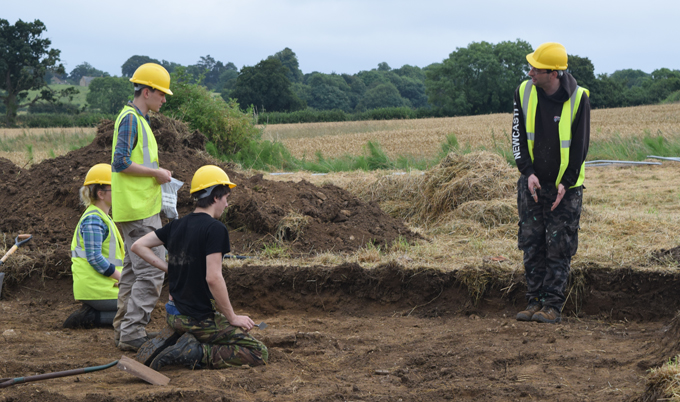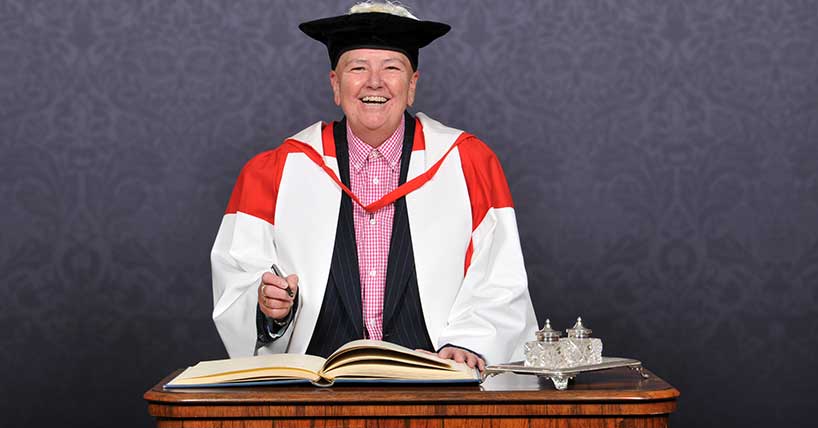Lufton Villa
Newcastle University students return to Roman villa for new excavation
Published on: 21 July 2017
An octagonal bath and fish mosaic are under the spotlight as new archaeological investigations into a fourth century Roman Villa get underway in Lufton, Somerset.
Octagonal structure
A team of eight students, led by Dr James Gerrard and Andrew Agate from Newcastle University, are excavating the historic site over the next two weeks with the South Somerset Archaeological Research Group.
The bath area of the building was first excavated by Leonard (Polly) Hayward FSA Fellow of the Society of Antiquaries in the late 1940s and has fascinated archaeologists ever since.
The octagonal structure, with a deep pool surrounded by a mosaic depicting fish, has been variously interpreted as an ostentatious bath, a precociously early Christian baptistery or an impressive component of a suite of high status reception rooms.
This year’s excavations will seek to precisely locate the octagonal bath and, if possible, shed new light on its function.
“The octagonal bath is a fascinating and unusual architectural feature that would have been the main focus of the site,” said Dr Gerrard, senior lecturer in Roman Archaeology. “We believe it was in the base of an eight-sided tower that proved quite difficult to maintain – perhaps the result of an over ambitious builder or architect. The previous excavator found large buttresses supporting the building, suggesting that the Roman builders had to make major repairs to stop it collapsing.”

Personal insights
Last summer, Dr Gerrard led a team of 20 students at the site, and they undertook the first excavation of the villa since the 1960s, when Leonard Hayward FSA (Fellow of the Society of Antiquaries), carried out early investigative work there. He took his grammar school pupils to the site in his Morris Traveller and they helped him excavate this nationally important building.
The 2016 excavation has shed new light on the lives of the people who lived at the villa. They ate shellfish, including oysters from Poole Harbour region – even though Lufton is quite far away from the sea. They also found the bones of sheep, cattle and pigs, mallard (ducks), doves, and chickens. Less welcome visitors to the villa were mice, voles and crows.
The residents used pottery from Black Burnished kilns in Poole Harbour as well as finer pottery from Oxfordshire and the New Forest. More personal objects include a lady’s bone hairpin and tiny glass beads from a necklace.
Dr Gerrard said: “This is a rare opportunity to reinvestigate a really important late Roman building. Our discoveries have given us ever closer and personal insights into how the wealthy Romano-British inhabitants of this site lived during the twilight years of the Roman Empire.”
Scheduled ancient monument
Lufton Roman villa is a scheduled ancient monument owned by James Pullen - a local farmer. Newcastle University has permission from the Secretary of State for Culture, Media and Sport and Historic England to assess the state of the monument and carry out work there.
There will be an open evening from 4pm to 7pm on Tuesday 1 August followed by a public lecture by Dr Gerrard at the Abbey Manor Community Centre in Yeovil at 7.30pm on Wednesday 2 August.
There will be frequent progress updates on the project blog and on Twitter #Lufton.



